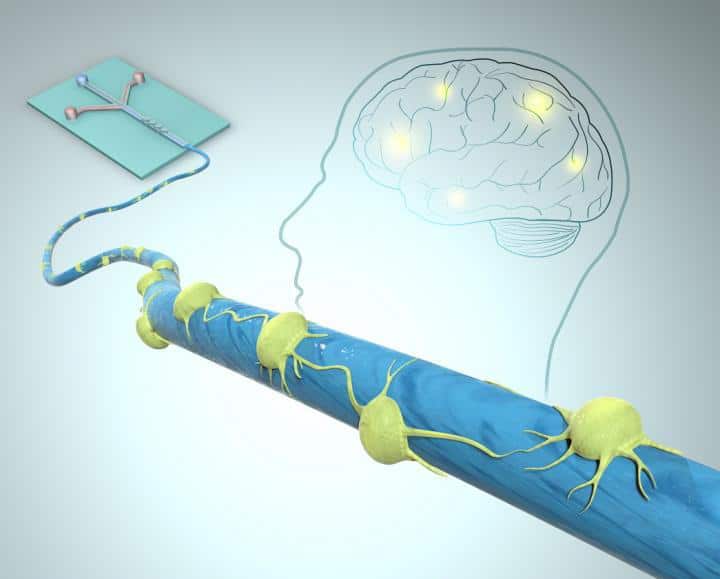Iowa State University researchers have created a new way to design and fabricate microfibres that support cell growth and could eventually reconnect nerves and regenerate damaged tissues.

"Neural stem cells on our polymer fibres could survive, differentiate and grow," said Nastaran Hashemi, an Iowa State assistant professor of mechanical engineering and leader of an Iowa State team producing microfibers with the help of microfluidics, the study of fluids moving through channels just a millionth of a meter wide.
"These new fibrous platforms could also be used for cell alignment which is important in applications such as guiding nerve cell growth, engineered neurobiological systems and regenerating blood vessels, tendons and muscle tissue," Hashemi said.
The research was supported with a grant from the US Office of Naval Research, an organisation that wanted to learn more about traumatic brain injury.
"We are interested in understanding how shock waves created by blows to the head can create microbubbles that collapse near the nerve cells, or neurons in the brain, and damage them," Hashemi said in a statement.
The Iowa State researchers are working to build a microfibre scaffold to support the cells and allow them to survive for the US Navy's studies of brain injuries. One day, the scaffold technology could help repair nerves or tissues damaged by injuries or disease.
"Our approach to fibre fabrication is unique," Hashemi said. "There is no high voltage, high pressure or high temperatures. And so one day I think we can encapsulate cells within our fibres without damaging them."
The Iowa State researchers are said to have developed an approach that uses microfluidic fabrication methods to pump polycaprolactone (PCL) through tiny channels to produce microfibers. The fibres are 2.6 to 36.5 millionths of a meter in diameter. Their shapes can be controlled, as can their surface patterns. They're also flexible, biocompatible and biodegradable.
"The novelty here is the fabrication method," Hashemi said. "We employ hydrodynamic forces to influence the orientation of molecules for the fabrication of these fibre structures that have different properties along different directions."
The Iowa State researchers reportedly demonstrated that neural stem cells were able to attach and align on the microfibre scaffold.
"In this study, cell death was minimal, and cell proliferation was affected by changing the features of the fibrous scaffold," the researchers reported in a paper published in Biomacromolecules.
The researchers believe their technology could be a tool that helps tissue engineers find ways to regenerate nerve cells and other tissues:
"By mimicking the microenvironment of the nervous system, regeneration can be enhanced due to biological and chemical cues in the environment," the researchers wrote in their paper. "In addition, the PCL fibres can be applied in regeneration of other tissues such as muscle, tendons and blood vessels."




Poll: Should the UK’s railways be renationalised?
I think that a network inclusive of the vehicles on it would make sense. However it remains to be seen if there is any plan for it to be for the...